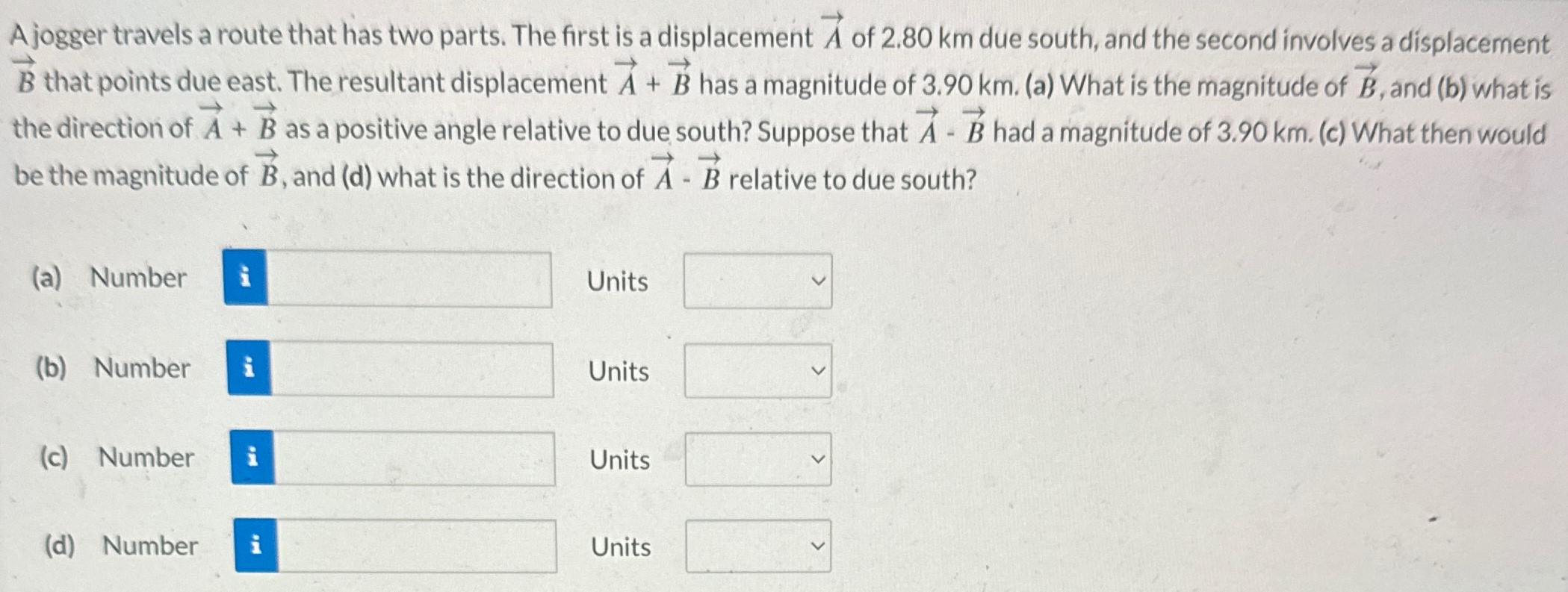A jogger travels a route that has two parts. The first is a displacement A→ of 2.80 km due south, and the second involves a displacement B→ that points due east. The resultant displacement A→ + B→ has a magnitude of 3.90 km. (a) What is the magnitude of B→, and (b) what is the direction of A→+B→ as a positive angle relative to due south? Suppose that A→ − B→ had a magnitude of 3.90 km. (c) What then would be the magnitude of B→, and (d) what is the direction of A→⋅B→ relative to due south? (a) Number Units (b) Number Units (c) Number Units (d) Number Units
